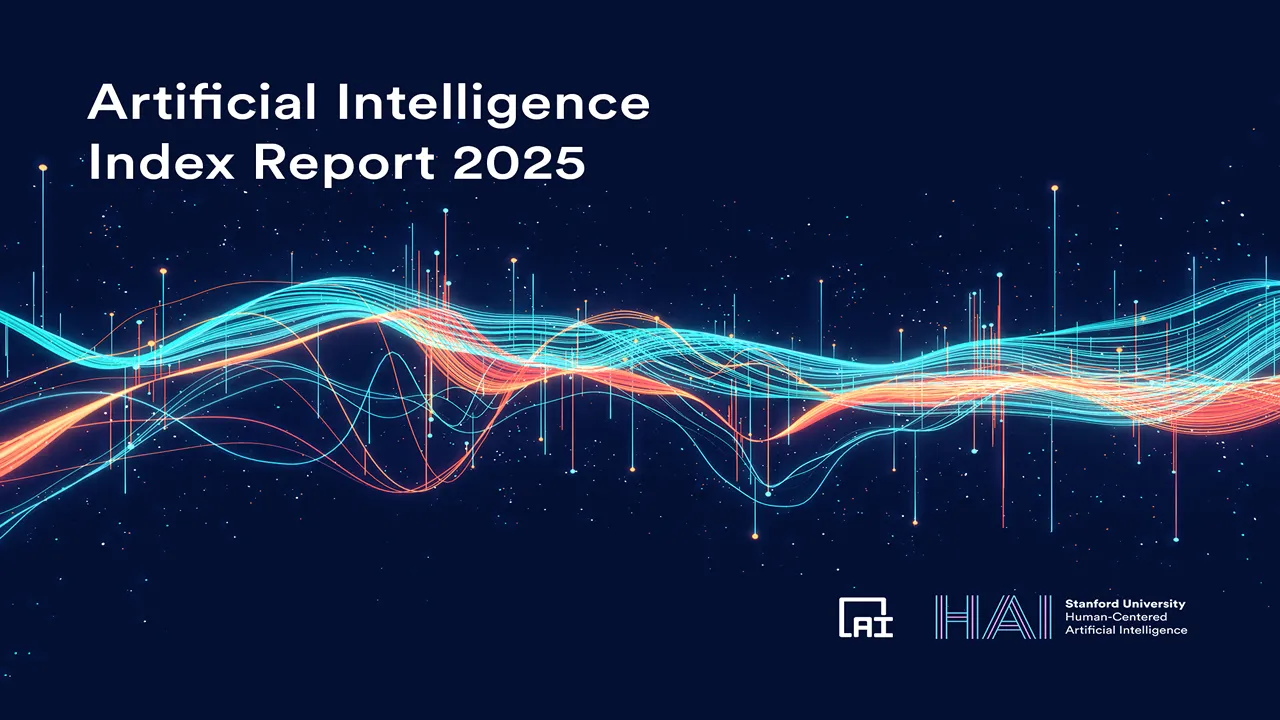Introduction: Stanford HAI Takes the Pulse of Rapidly Evolving AI
Stanford's Institute for Human-Centered AI (HAI) today, May 27, 2025, presented to the public an important interim update to its authoritative annual report – Stanford's 2025 AI Index Mid-Year Update|"AI Index Report 2025 – Mid-Year Pulse". This document traditionally serves as a key barometer of the state and dynamics of the global AI sphere's development, and the latest data confirm both incredible rates of progress and the exacerbation of several fundamental problems. The report covers a wide range of aspects: from technical achievements and investment volumes to public perception and regulatory initiatives.
Key Trend #1: Incredible Growth in Model Performance and Record Investments
One of the main conclusions of the report was the confirmation of the continued exponential growth in AI model performance, especially in generative AI. New architectures and training methods are enabling increasingly impressive results in generating text, images, code, and other data types. This technological breakthrough is accompanied by unprecedented levels of private investment. Despite some cooling in the general venture market, the AI sector, particularly startups working on generative models, continues to attract record sums. Stanford's 2025 AI Index Mid-Year Update|The HAI report indicates this signifies high investor confidence in the long-term potential of these technologies and their ability to transform the economy.
Key Trend #2: Increased Regulatory Attention Worldwide
Parallel to the technological boom and investment activity, the AI Index compilers note a significant increase in attention to AI regulation issues from government bodies worldwide. Many countries are actively developing or already implementing legislative frameworks aimed at managing AI-related risks and ensuring its safety, transparency, and ethicality. The report likely provides examples of such initiatives in the EU, US, China, and other regions, emphasizing the global nature of this trend and the search for a balance between stimulating innovation and protecting public interests.
Key Trend #3: Accelerated AI Adoption in Key Sectors
The Stanford's 2025 AI Index Mid-Year Update|updated AI Index also records the accelerated penetration of AI technologies into various economic and social spheres. Progress is particularly noticeable in industries such as healthcare (where AI assists in diagnostics, drug development, and treatment personalization) and transport (development of autonomous vehicles, logistics optimization). AI adoption is also actively underway in the financial sector, retail, manufacturing, and education, indicating broad recognition of its practical value.
Persistent Challenges: Reasoning, Safety, and Equitable Access
Despite impressive achievements, the Stanford HAI report soberly assesses existing problems. One of them remains the limitation of modern AI models in tasks requiring deep logical reasoning, understanding of cause-and-effect relationships, and common sense. AI safety issues, including its resilience to attacks, the potential for generating malicious content, and risks of unpredictable behavior, also remain on the agenda. Furthermore, the problem of ensuring fair and equitable access to AI's benefits is emphasized, as are the risks of exacerbating existing digital inequality both between countries and within societies.
What This Means for Industry and Society
The AI Index report data serve as an important benchmark for all participants in the AI ecosystem: developers, investors, policymakers, and the general public. They point to the need for continued fundamental research, a responsible approach to investment, the development of flexible and effective regulatory mechanisms, and the importance of public discussion about the future of AI and its place in our lives.
Conclusion: AI Index – A Mirror of the AI Revolution
The Stanford's 2025 AI Index Mid-Year Update|interim update of the AI Index Report 2025 from Stanford HAI once again confirms that we are living in an era of rapid AI revolution. This report is a valuable tool for understanding its scale, achievements, and the challenges we still have to overcome on the path to creating truly useful, safe, and fair artificial intelligence.
